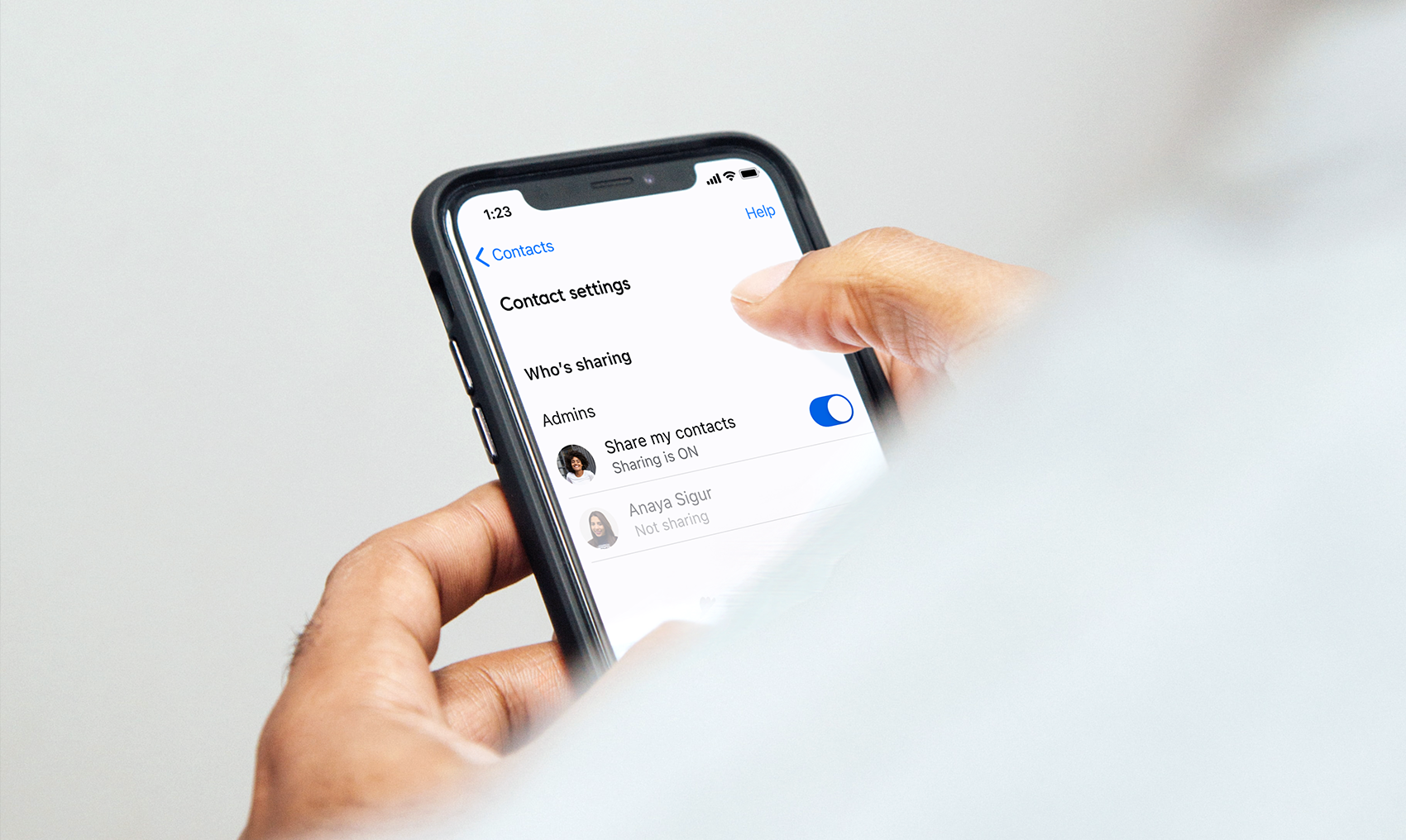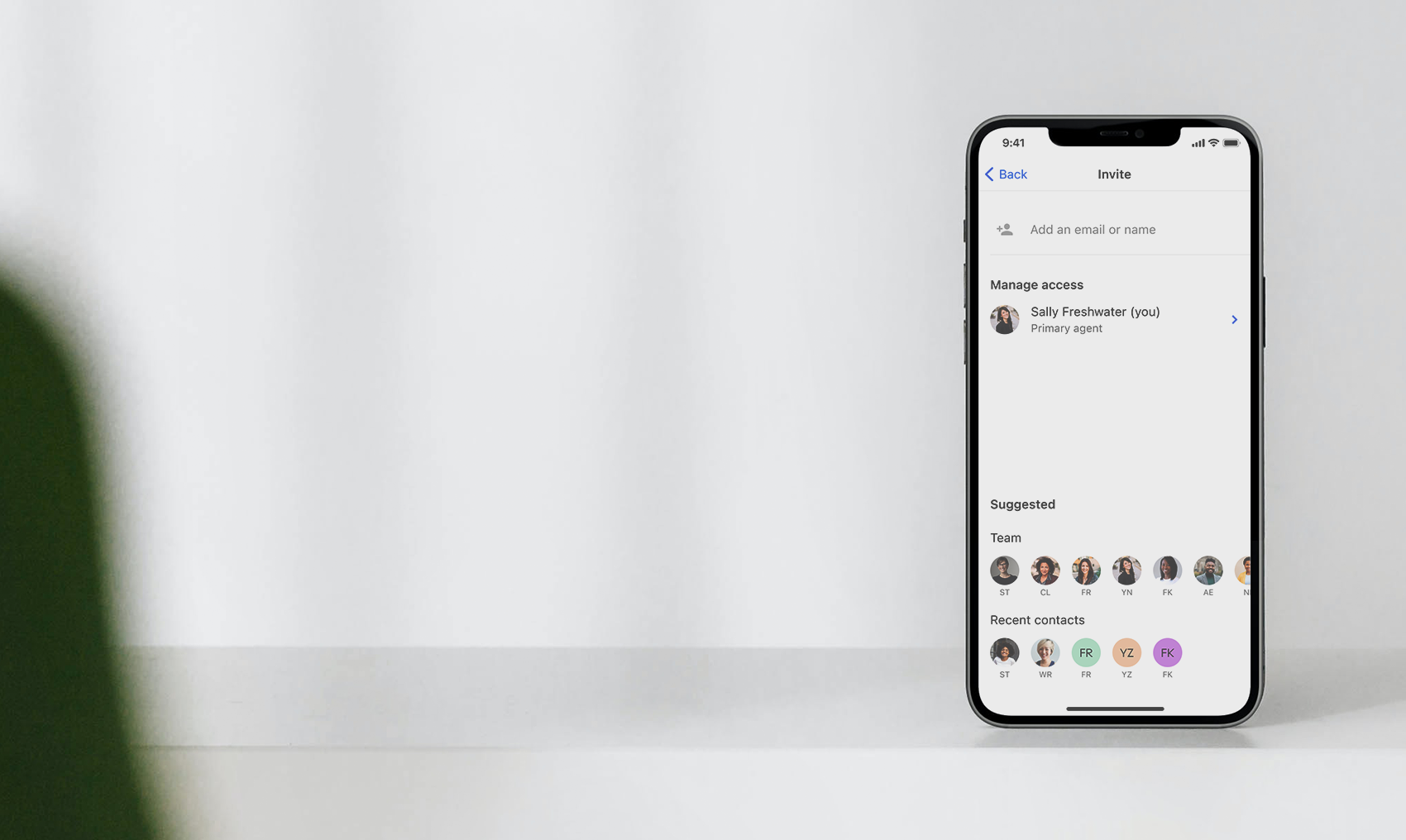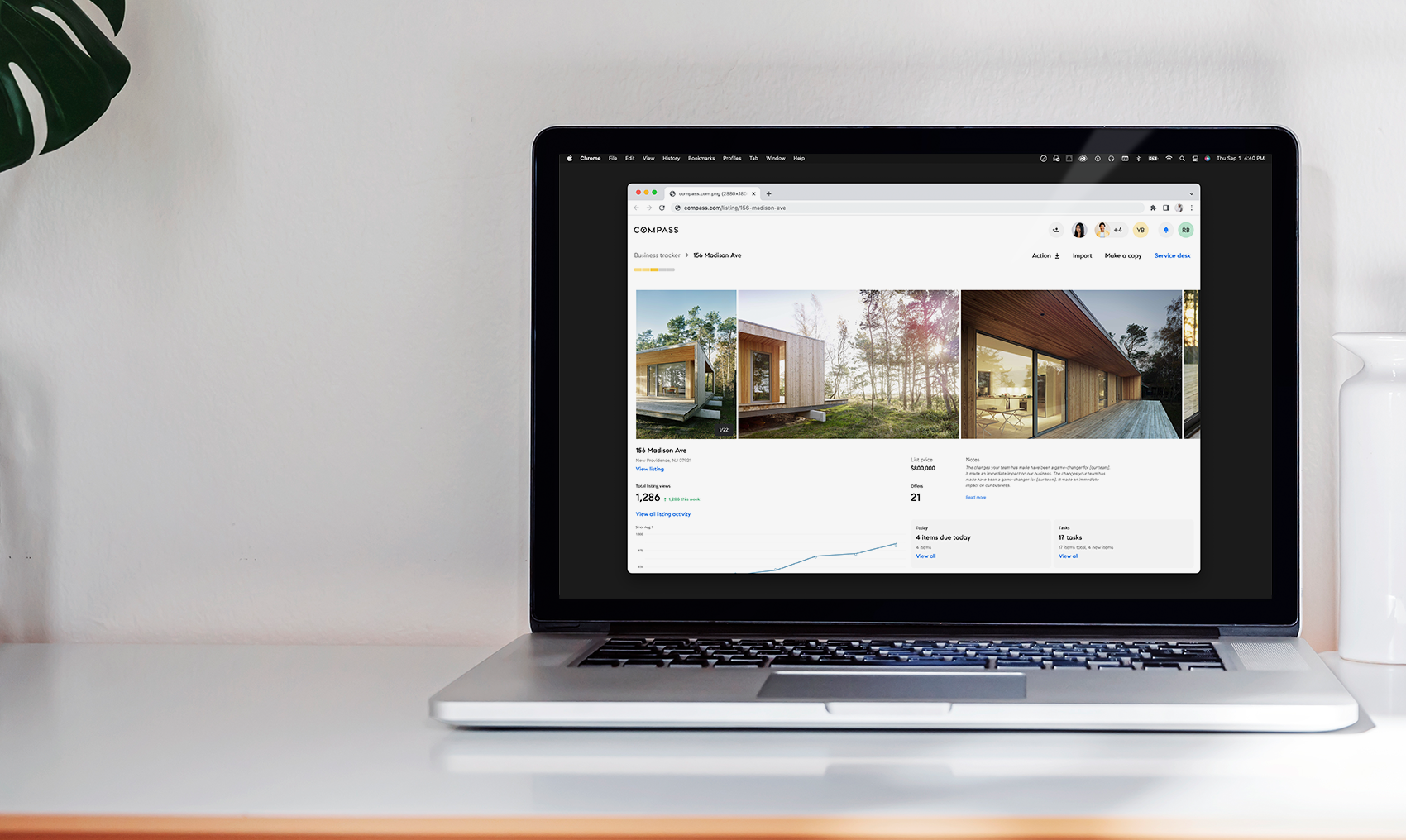Compass
←
As staff designer at Compass, I led strategy and design for connected, functional, collaboration experiences across the platform.

Overview
Design to support collaborative workflows on Compass, an end-to-end real estate transaction platform that includes apps and services across dozens of domains, including AI insights, Customer Relationship Management (CRM), email, tasks, marketing tools, and project tracking.
Customer
Real estate agents are entrepreneurs. They traditionally rely on a mixture of digital and analogue collaboration tools including whiteboards for project tracking, and a stack of disparate technology solutions to support their workflows.
Team contacts
Using outcomes from a foundational study, my team targeted a set of small openly collaborative agent teams for an early access contact sharing program. Principal agents could enable ‘team contacts’ which then allowed team members to opt-in to a shared contact pool.
The solution included easy Role Based Access Control (RBAC) setup and onboarding, in-app help, timely notifications, plus clear access status and control for all team members.


Design solution v1
Expanding the team contacts design to a platform solution meant the design had to enable selective sharing for resources such as marketing, listing presentations and tours, as well as contacts. Considerations included how permissions would cascade down to attachments, support for URL sharing as well as sharing that required access/authentication. Our components also had to support integrations such as tasks – that didn't use the main invite UI but did use the back-end services.
We created a flexible set of components that could be consumed by individual product team designers and engineers, and our team launched the solution with our first internal customer.
Working with the Design System (DS) team, who were also part of Core Experiences, I identified and drove alignment around ownership of new variants of existing components, proposed new complex components, and helped define interaction patterns that were central to platform collaboration.






